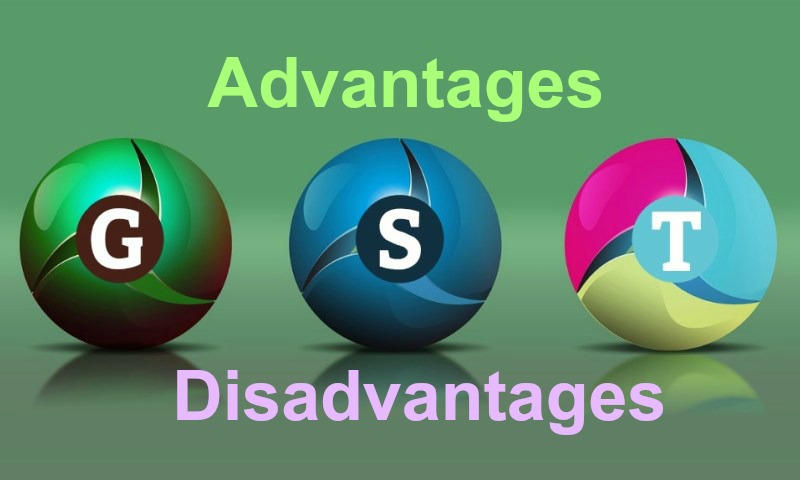Are you planning to register for GST? Well if so, then this article will leave no doubts to you.
GST stands for Goods and Service Tax. It was first initiated in 1986 by Vishwanath Pratap Singh 7th Prime Minister of India. After that in 2007, the current government proposed to implement GST and presented the same in Lok Sabha in 2011. In Dec 2014 GST again presented in Lok Sabha and in same is passed in 2015. After approval of Rajya Sabha same is called as 101th amendment of the Constitution and is rolling out from 1 July 2017. After the passage of 25 years of economic reforms in the indirect taxes is going for a revolutionary change in the form of GST.
What is GST
In India, there are different kinds of taxes that are levied in the form of indirect taxes. For example, the manufacturer procures the raw material and transform the same into final goods and pay excise duty on the manufacturing of goods. Further, the traders like wholesaler and retailer pay sales tax or VAT on the same. In the case of inter-state sale and purchase Central Sales Tax is levied on trading of goods. The octroi is also paid on transportation of goods from one state to another. The credit passes on from trader to trader and lastly, all these taxes indirectly collected from the customer at the last resort under the umbrella of MRP (Maximum Retail Price).
ALL these taxes trap finally come to an end with only one indirect tax in the country called GST. Now you only need to register your business for GST as it is a collaboration of all taxes with a new name which is replacing all indirect taxes with a new and single tax.
Related- Effect of Make in India on India Economy
Types of GST
There are three kinds of taxes under the GST.
SGST, CGST, and IGST
- SGST
STATE GOODS AND SERVICE TAX is the part of tax diverted to the state government which is credited to revenue department of state government. This is generally equivalent to CGST. This compensates the loss of existing VAT or Sales Tax revenue to state government. In the case of local sales, 50% quantum of tax amount under GST is diverted to SGST TAX.
- CGST
CENTRAL GOODS AND SERVICE TAX is the share of GST TAX diverted to revenue department of central government and is also equivalent to SGST. This share of tax compensates the loss of existing excise duty and service tax to the central government. In the case of local sales, balance 50% quantum of GST is transferred to CGST.
- IGST
INTEGRATED GOODS AND SERVICES TAX is levied when inter-state sales and purchase is made. One part of this tax transferred to central government and another to state government to whom goods and services belong. The IGST is charged only in case of inter-state sales or when transactions between two states involved.
Related- Advantages and Disadvantages of GST
Problems in Implementation of GST
Vat or sales tax is levied and collected by the state government. Different state government charge different rate of taxes on different kind of goods traded within their respective territorial limits under the extreme power provided to the state under state list of the Constitution. Whereas CST central sales tax is levied by the central government and collected by the state government as per the concurrent list of the Constitution. Same the EXCISE duty as per central excise act 1944 and service tax as per finance act 1994 is levied and collected by the central government through the extreme power provided under the union list of the Constitution.
Due to this distribution of power under the Constitution, no state government wants to losses the revenue source called VAT or Sales tax. GST is the subject matter of union list and no state agrees to bifurcate their income to the central government but now as the same political party is in majority in the state and central. All state government agreed to the proposal, as a result, GST Rollout.
Why GST is Important in India
The current structure of taxes in India is a rat trap. The wide powers to levy and collect taxes provided to states and central government, as a result, both levy different kinds of taxes which makes the Indian tax structure very much complex and a complex economy too. The small-scale industries In India continuously suffering from these problems.
There are two types of taxes in India
- Direct Tax – means the taxes which are paid directly by the person on whom it imposed. For example- Income Tax, Property Tax, Wealth Tax, Gift Tax etc.
- Indirect Tax – means the tax whose Burden can be transferred to others. For example- Sales Tax, Excise Duty, Service Tax etc.
To make tax simpler and to reduce the tax liabilities of small-scale industries and small businessman GST is introduced. It’s very much simpler to understand and pay tax for both customer and seller respectively.
Related- How to Register a Company in India
Tax Rates under GST
GST rates are divided into five categories which are 0% , 5%, 12%, 18%, 28%.
All the basic need requirement goods are pleased in 0% category like food grains, bread, salt, books etc. Goods like paneer, packed food, tea coffee etc are placed under 5% category. Mobiles, sweets, medicine, are under 12%. All types of services are under 18% category. All other remaining luxury items are placed under the last head of 28%.
Petrol, gas, crude oil, diesel etc. are still out from the criteria of GST.
Impact of GST
In the case of indirect taxes, the burden was on end customer or consumer. But due to the implementation of one tax in the whole country the overall cost of production of all goods will be reduced but on the other hand in case of services, it will increase after the implantation of GST but CST gets abolished which ultimately reduces the cost of goods. Currently, we pay 30-35% tax on a commodity. In the case of some goods, direct and indirect taxes imposed by government raise its cost upto 30%. After the implementation of GST, it will reduce. The GST also reduces the cascading effect of tax which helps in making the trade simple and reduces the tax Burden of Entrepreneurs.
One India One Tax is a Myth!!!
GST is one tax in India is not the correct statement as GST only comes on the replacement of different indirect taxes, However Custom Duty or Import Export Duty will remain continued to levy. Further few amendments have already being made In custom law and same will remain applicable in India.
All other direct taxes like Income Tax, Gift Tax, Property Tax etc will remain continued in forces as earlier.
Conclusion of GST
Implementation of GST is one of the best decision taken by the Indian government. For the same reason, July 1 was celebrated as Financial Independence day in India when all the Members of Parliament attended the function in Parliament House. The transition to the GST regime which is accepted by 159 countries would not be easy. Confusions and complexities were expected and will happen. India, at some point, had to comply with such regime. Though the structure might not be a perfect one but once in place, such a tax structure will make India a better economy favorable for foreign investments. Until now India was a union of 29 small tax economies and 7 union territories with different levies unique to each state. It is a much accepted and appreciated regime because it does away with multiple tax rates by Centre and States. And if you are doing any kind of business then you should register for GST as it is not only going to help Indian government but will help you also to track your business weekly as in GST you have to make your business activity statement each week.






Nice and good information had have it is useful for children also
Nicely presented & Very useful information is provided in easy language
This information is very useful
good information
Thanks for the information . It was really very helpfull
Such a wonderful information on GST ….
Thanks you
Hypothesis of GST